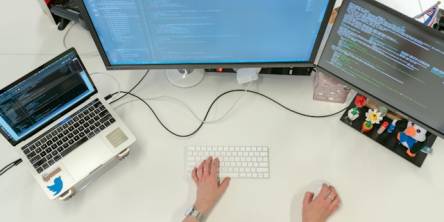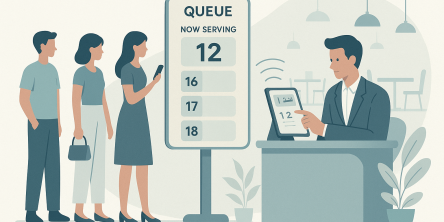The Impact of Technology on Modern Art: Exploring the Intersection with Blockchain Technology

In recent years, the fusion of technology and art has ushered in a transformative era for the art world. This intersection has particularly been significant with the advent of digital innovations such as blockchain technology. The impact of such technologies on modern art is profound, redefining how art is created, sold, and preserved. This article delves into how blockchain technology, a key player in this technological revolution, influences modern art, reshaping its landscape and opening new avenues for artists and collectors alike.
Introduction to Blockchain Technology in Modern Art
Blockchain technology, best known as the backbone of cryptocurrencies like Bitcoin, is essentially a decentralized digital ledger. It records transactions across many computers so that the record cannot be altered retroactively without affecting all subsequent blocks. This feature has found a promising application in the art world, particularly in modern art, where it enhances authenticity, provenance, and security.
Enhancing Artistic Authenticity and Provenance
One of the primary impacts of blockchain technology on modern art is its role in verifying authenticity and provenance. Art forgery has been a longstanding issue in the art world, with countless instances of counterfeit works being sold as authentic. Blockchain technology offers a solution by providing a tamper-proof record of an artwork’s history.
Application in Modern Art: By registering art on the blockchain, each piece can be tagged with a unique, immutable digital certificate of authenticity. This certificate records every transaction associated with the artwork, from the artist’s studio to the current owner, making any forgery easily detectable.
Revolutionizing Art Sales and Ownership
Blockchain technology has also revolutionized how art is sold and owned. Traditionally, buying and selling art could be a complex process, fraught with uncertainties regarding valuation, authenticity, and legal ownership. Blockchain introduces a streamlined, transparent process that can facilitate these transactions more securely and efficiently.
Modern Art Marketplaces: Platforms like Artory, Ascribe, and others use blockchain to conduct sales and track ownership. These platforms ensure that all information about the art piece, including previous sales and provenance, is readily accessible and verifiable. Additionally, blockchain enables the fractional ownership of artworks, allowing more people to invest in art by purchasing shares of a piece, thus democratizing art investment.
Fostering Creative Innovation and New Media
The integration of blockchain technology is not limited to the administrative aspects of art; it also influences creative processes. Artists are increasingly exploring blockchain and related technologies as mediums and themes in their art.
Blockchain as a Medium: Modern artists like Kevin Abosch and Robbie Barrat have used blockchain to create innovative works that question concepts of value, ownership, and the reproduction of digital art. These artworks often involve creating digital assets or "crypto art," which are bought, sold, and collected entirely on blockchain platforms.
Addressing Challenges in Digital Art
Digital art has historically faced challenges related to reproduction and distribution—digital files can be easily copied and shared, making it difficult to maintain exclusivity and value. Blockchain technology offers a powerful solution by enabling digital artworks to be tokenized as non-fungible tokens (NFTs).
Non-Fungible Tokens (NFTs) and Modern Art: NFTs are unique digital tokens that represent ownership of a specific digital asset, like a piece of digital art. They cannot be replicated or replaced and are stored securely on the blockchain. This has created a new economy for digital art, providing artists with a platform to sell their work while maintaining control over the distribution.
Promoting Transparency and Ethical Practices
Blockchain’s ability to provide a transparent and immutable record of transactions promotes ethical practices within the art market. This technology ensures that the sale and reselling of artworks are recorded, helping to prevent illegal practices such as money laundering, which has been a concern in the art world.
Transparency in Transactions: With blockchain, every transaction related to a piece of art is recorded in a way that is accessible to the public but cannot be altered. This level of transparency helps build trust among buyers, sellers, and artists, ensuring that all parties are accountable for their actions.
Conclusion
The integration of blockchain technology into modern art represents a significant cultural shift, reflecting broader trends toward digitalization and technological integration in society. For artists, collectors, and enthusiasts, blockchain not only offers practical solutions to age-old problems but also opens up new spaces for creativity and expression. As we continue to explore the possibilities of "Modern Art and Blockchain Technology," it becomes clear that the future of modern art will be increasingly digital, decentralized, and democratic, paving the way for a more inclusive and transparent art world.
Similar Articles
Compare hydraulic and traction residential elevators to find the best fit for your home. Learn how each system works, their pros and cons, space needs, energy use, and maintenance requirements.
Extend the lifespan of your commercial marina docks with proactive maintenance. Learn essential inspection routines, material-specific care, and safety tips to protect your investment and ensure long-term dock performance.
Learn the key factors in designing an engineered fall protection system. Discover how hierarchy of controls, task analysis, structural integrity, and fall clearance ensure safety and compliance.
Today, modern businesses face constant pressure to operate with maximum efficiency. This requires a technology infrastructure that is both agile and robust. However, the traditional model of on-premises data centers often has significant limitations. These legacy systems can drain valuable resources from teams.
When people are hungry, standing in line for a table feels tiring and unpleasant. In fact, research shows that most individuals will just walk away if they have to wait longer. They will go and find another place to eat.
In the early stages of designing new community centers, fire stations and administration buildings, city planners and architects are forced to make a crucial decision: What building material is best suited for providing the most value, safety and longevity to the public?
Amazon Simple Queue Service (SQS), Simple Notification Service (SNS), and EventBridge are just a few of the messaging services that AWS provides to meet various demands when it comes to creating scalable and effective cloud systems.
Wearable technology, embracing devices small enough to be worn unobtrusively, constitutes a market that keeps expanding, and the momentum shows little sign of slowing
For job seekers, grasping the basic functions of Applicant Tracking Systems (ATS) is the first step in overcoming common job search barriers.









